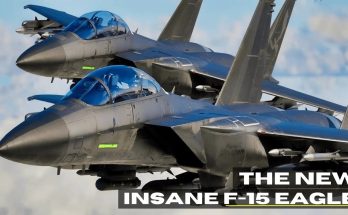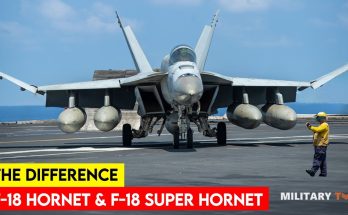EU & Canada’s Break from the F-35 Deal with the US: Europe Takes a Stand Against Trump
In a stunning geopolitical shift, the European Union (EU) and Canada have announced their decision to break from the long-standing agreement with the United States regarding the purchase of the F-35 Lightning II, marking a significant break in defense relations. This decision signals not just a reevaluation of defense priorities but also a broader rift in transatlantic relations. As tensions rise, both the EU and Canada are stepping away from the U.S. and choosing a different path for their future defense and military partnerships. This move comes amidst growing concerns about U.S. defense policies, particularly under the leadership of former President Donald Trump, whose “America First” approach has been a source of contention.
A Shift in Military Strategy
The F-35 program, a collaborative effort between the United States and several allied nations, has been at the heart of the Western defense strategy for the past two decades. The U.S. has long been the leader in the development and production of the F-35, with NATO members and allied countries like Canada heavily invested in the stealth fighter’s capabilities. However, recent tensions in diplomatic and defense relations have prompted both the EU and Canada to reassess their military procurement strategies and take a bold stance against the F-35 deal.
The EU’s decision is rooted in several factors:
-
Growing Independence in Defense: One of the key drivers behind the EU’s decision is its desire for greater autonomy in defense matters. European leaders have voiced their concerns over the growing reliance on U.S. military power in recent years, particularly under Trump’s presidency. The desire for an independent European defense system, supported by European-made technology, is increasingly gaining traction within the EU.
-
Trump’s “America First” Policies: During Trump’s tenure, tensions between the U.S. and its NATO allies reached new heights. Trump’s criticism of NATO members for not meeting defense spending targets and his unilateral decision-making on key military matters prompted a reevaluation among European countries. Many in Europe feel that U.S. defense policies under Trump were increasingly self-serving and undermined the strength of traditional alliances. The F-35’s dependence on U.S. manufacturing has come to symbolize this over-reliance.
-
Cost and Performance Issues: The F-35 program has been plagued by delays, cost overruns, and performance challenges. European nations have grown concerned over the aircraft’s technical issues, including its maintenance costs, and the long-term viability of continuing to invest in the program. With other aircraft options emerging, such as the Eurofighter Typhoon or the French-made Rafale, many EU countries are now questioning whether the F-35 is the best choice for their defense needs.
-
Rise of European Defense Initiatives: The EU’s strategic autonomy is becoming a priority, with a growing interest in developing its own military capabilities and reducing dependence on external powers like the U.S. The European Defense Fund and other regional initiatives have spurred interest in creating indigenous solutions to European security challenges.
Canada’s Decision: A Response to Changing Dynamics
Canada’s decision to break away from the F-35 deal is similarly linked to its evolving defense posture. Although Canada has traditionally been a U.S. ally in defense matters, its recent move away from the F-35 is rooted in several considerations:
-
Political Pressure and Public Opinion: Canada’s political leadership has been under pressure from both domestic political parties and the public to reassess military procurement contracts, especially those involving U.S. defense contractors. The decision to move away from the F-35 has been fueled by concerns over the high cost of the aircraft and limited domestic involvement in the program. Canada’s defense needs are increasingly seen as requiring a more balanced approach that does not solely rely on U.S. suppliers.
-
Regional Security Concerns: Canada, like Europe, is increasingly focused on regional security challenges, including cybersecurity and the evolving dynamics in the Arctic region. With the F-35’s emphasis on conventional combat, Canadian leaders are exploring alternatives that are better suited to the changing nature of warfare, including unmanned systems and cyber capabilities.
-
Tensions with the U.S. Over Trade and Policy: The broader political context of the U.S.-Canada relationship, particularly during the Trump administration, has also contributed to this shift. Tensions over trade and economic policies, coupled with a growing sense of Canadian sovereignty in defense and security matters, have pushed Canada to rethink its long-standing defense procurement policies.
Impact on NATO and Transatlantic Relations
The break from the F-35 deal is likely to have profound implications for NATO and the broader transatlantic alliance. The F-35 was viewed as a critical component of interoperability among NATO members, with its advanced stealth technology and multirole capabilities designed to enhance collective defense. If major NATO members like Germany, France, and Canada are now stepping away from the program, it could undermine NATO’s ability to operate as a cohesive military alliance, particularly in joint operations where the F-35 was expected to play a pivotal role.
In the wake of this decision, NATO may need to reconsider its future defense architecture, focusing more on self-reliance and regional initiatives. European nations might double down on EU-based defense technologies, increasing their focus on indigenous capabilities and potentially shifting the alliance’s future dynamics toward autonomous European defense.
The U.S. Response
For the United States, this break in the F-35 deal comes as a blow to both its defense industry and its strategic alliances. The F-35 program, developed and led by Lockheed Martin, has been a crucial element of the U.S. defense export strategy, with many allied nations contributing to its production and maintenance. A reduction in international orders could impact the long-term viability of the program, as the U.S. military depends on the economic benefits generated by these sales to fund the aircraft’s continued development.
Moreover, the decision by the EU and Canada to pursue alternative defense solutions could signal a shift in the balance of power within NATO and the broader international security environment. The U.S. will likely face increasing challenges in maintaining its global defense dominance, as allies seek to diversify their military capabilities and reduce dependence on American military technologies.
The Future of Transatlantic Defense Relations
While the decision by the EU and Canada to break from the F-35 deal marks a significant turning point, it is unlikely to lead to an immediate collapse in transatlantic relations. However, it does signal a growing fracture in the traditional alliance between the U.S. and its closest allies. The future of NATO and the broader Western defense architecture will likely depend on the ability of member states to adapt to new defense realities and balance national sovereignty with the needs of collective security.
As Europe and Canada explore alternative military partnerships, the U.S. will need to reassess its approach to multilateral defense cooperation and international alliances. It’s clear that the F-35 program no longer enjoys the universal appeal it once did, and the future of U.S. defense policy will require new strategies to maintain strong alliances in an ever-changing geopolitical landscape.
In the coming years, we may witness a reorientation of global defense priorities, with Europe and Canada forging closer ties with one another and exploring new technologies that better suit their evolving needs. The era of relying on U.S.-dominated defense systems, like the F-35, may be coming to a close, giving way to a more independent and diversified defense strategy in the West.



